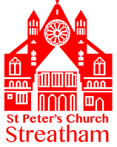St Peter’s is most fortunate in being home to an exceptionally fine four-manual organ built by the eminent Victorian craftsman William Hill. The church was consecrated in 1870 and the trustees particularly wanted to have somewhere where the music would play a worthy part in the reverent and devotional worship in the new church. Dr Benjamin Agutter was appointed as the first Organist and Choirmaster. Correspondence shows that Dr. Agutter worked carefully with William Hill and Son on the specification for the organ which was installed in 1870.
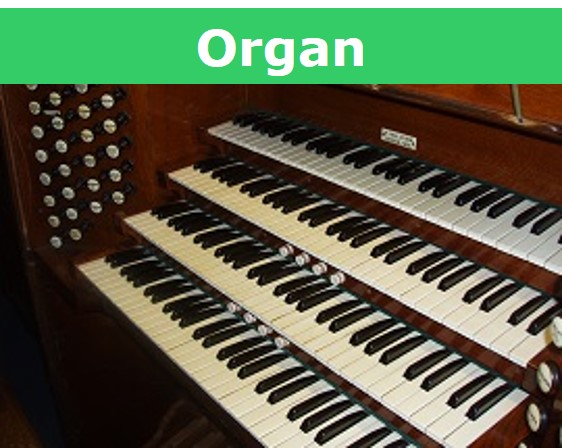
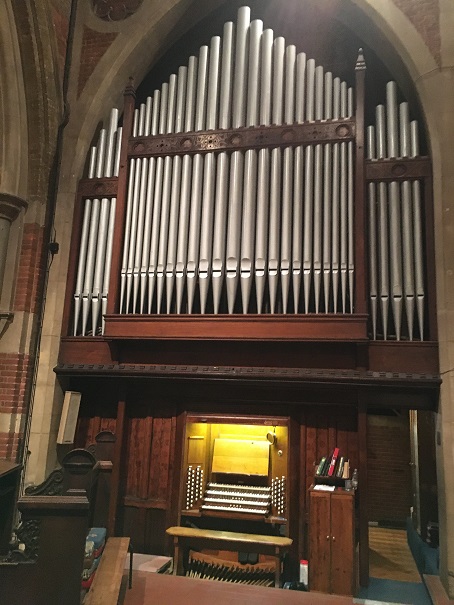
Dr. Agutter was still Organist and Choirmaster when the organ was enlarged, again by the William Hill & Son firm, to its present four manual specification in 1903 and an electric blower was installed. A grand West Case was added in 1913 to a design by Arthur Hill.
The organ with its 47 speaking stops provides a wide palette of rich and subtle sounds, and is well-suited to the demands of choral and congregational music, as well as solo recitals. A review of the organ was written in 1970 by William L. Sumner and published in Musical Opinion. Sumner, a great authority on organs contributed over sixty articles to The Organ magazine. His article is reproduced with kind permission below.
See also
W.L. Sumner Article
Organ Restoration Works
Planned Works – Feb 2021
Organ Specification
| Great Organ | Feet | Choir Organ | Feet |
| Double Diapason | 16 | Open Diapason | 8 |
| Open Diapason 1 | 8 | Dulciana | 8 |
| Open Diapason 2 | 8 | Gedeckt | 8 |
| Gamba | 8 | Gemshorn | 4 |
| Stopped Diapason | 8 | Suabe Flute | 4 |
| Principal | 4 | Flautina | 2 |
| Wald Flute | 4 | Clarinet | 8 |
| Twelfth | 22/3 | Vox Humana | 8 |
| Fifteenth | 2 | Tremulant | |
| Mixture | 3rks | ||
| Trumpet | 8 | Solo Organ | |
| Clarion | 4 | Tuba | 8 |
| Viol d’Orchestre | 8 | ||
| Swell Organ | Orchestral Oboe | 8 | |
| Bourdon | 16 | Rohr Gedeckt | 8 |
| Open Diapason | 8 | Harmonic Flute | 4 |
| Salicional | 8 | Tremulant | |
| Voix Céleste | 8 | ||
| Stopped Diapason | 8 | Pedal Organ | |
| Rohr Flute | 4 | Sub-Bourdon | 32 |
| Principal | 4 | Bourdon | 16 |
| Twelfth | 22/3 | Open Diapason | 16 |
| Fifteenth | 2 | Violone | 16 |
| Mixture | 2rks | Bass Flute | 8 |
| Double Trumpet | 16 | Violoncello | 8 |
| Cornopean | 8 | Principal | 8 |
| Oboe | 8 | Trombone | 16 |
| Clarion | 4 | ||
| Tremulant | |||
| Couplers | |||
| Great to Pedal, Swell to Pedal, Choir to Pedal, Solo to Pedal | Swell to Great, Solo to Great | ||
| Swell to Choir, Swell Octave and Sub-Octave | Solo Octave and Sub-Octave | ||
| There 4 pistons to Great and 4 pistons to Swell | Balanced Swell pedals for Swell and Solo | Trigger swell pedal for Choir |
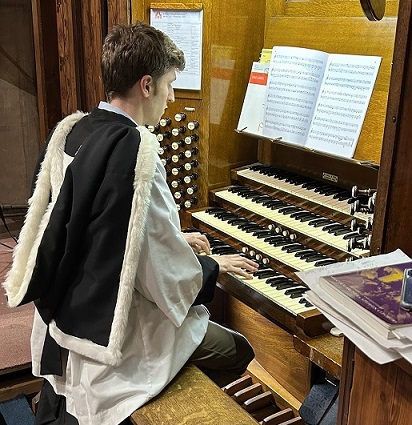
Recorded at St Peter’s on 21st November 2021
at a concert at St Peter’s Streatham in 2009
Organ Development
The organ started life as a 3 manual instrument built by William Hill and Son for the churches consecration in 1870. You can see the original specification at the National Pipe Organ Register here. The organ was built to a specification agreed with the church’s Organist and Choirmaster, Benjamin Agutter. The departments were Great, Swell, Choir and Pedals.
The organ was enlarged to its current size between 1903 and 1913. The organ chamber was enlarged when the vestries were enlarged in 1903.
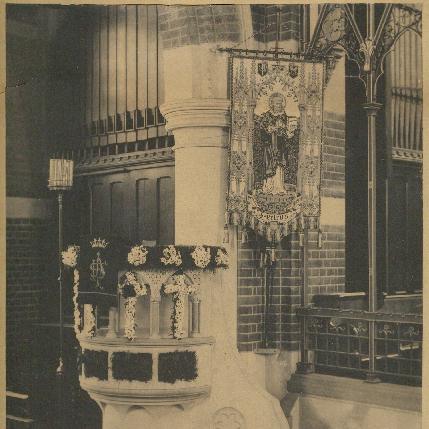
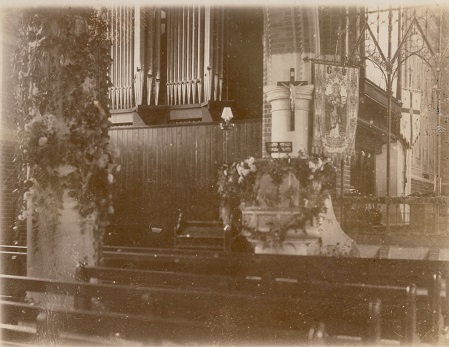
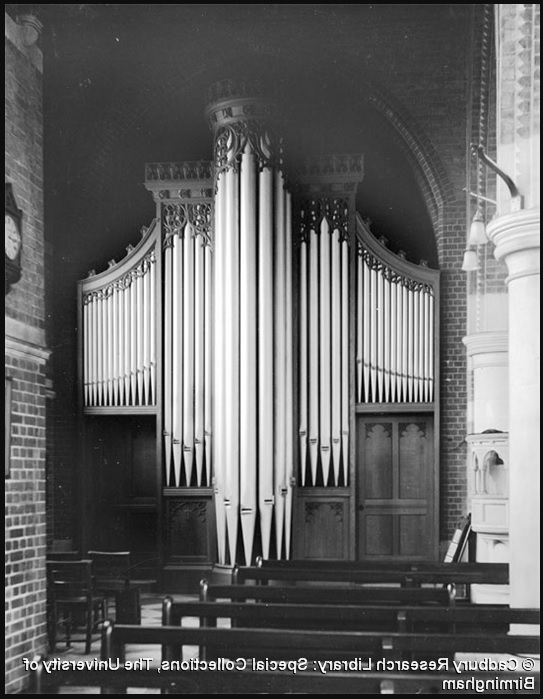
The organ reached its current size in 1913 when the final works were carried out by the William Hill and Son firm. These final works included the installation of a new West Case being formed by the pipes of the 16ft Pedal Violone.
The organ was photographed in 1920 by the local organ photographer Andrew Freeman.
The Layout
The arrangement of the departments of the organ give away its development and provide a source of debate as to the original intentions. The Great Organ speaks out over the choir area of the church. The Swell is placed centrally and the pedal pipes encircle the Swell box. The Swell shutters open over the choir area. This means that the largest departments of the organ do not speak directly into the body of the church (westwards) – thus reducing their impact in the nave. However, the choir organ is directly behind the west facing Arthur Hill screen and so can provide a boost for congregational items as well as being used on its own to solo out lines. However, the choir organ acts as a baffle for the Swell and Great. The Solo is placed at the top of the organ chamber and so its sound is relatively unencumbered. The Tuba pipes peak, and speak, over the top of the south case. At some stage, a second shutter was added to the Swell to speak westwards but this has not been controlled by the swell pedal in living memory.
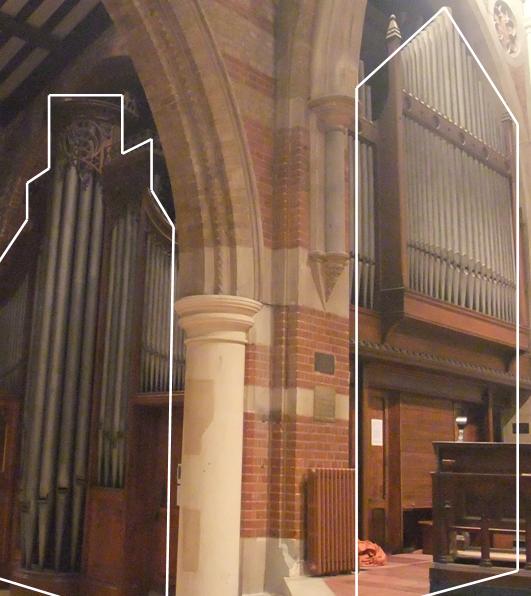
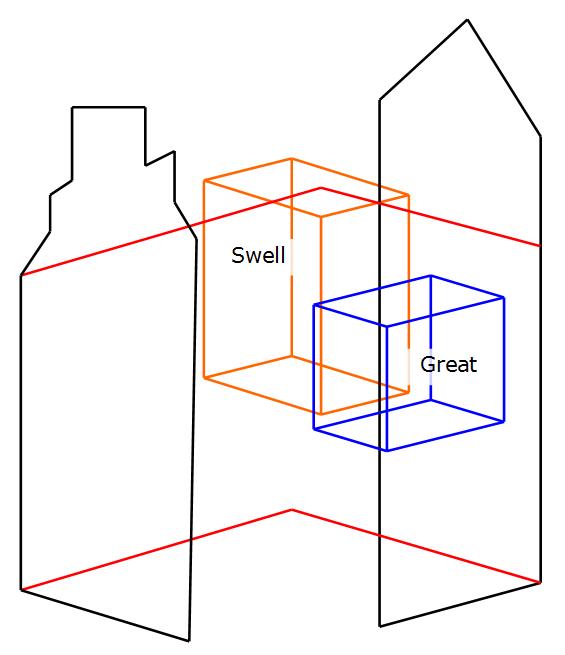
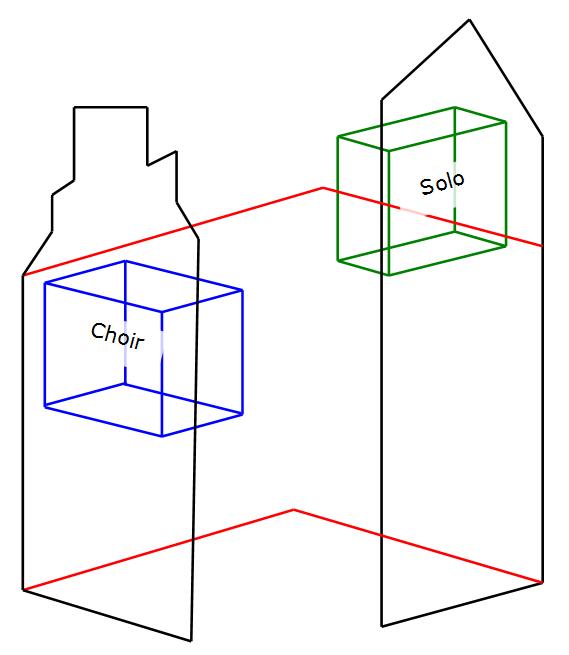
Two read the article written by W.L. Sumner in 1970 about St Peter’s Organ – follow this link:
Current Condition and Restoration Works
The organ is in fine playing form. The pistons have not been in operation since the 1990s. However, a process of restoration has been underway to overhaul the manual departments of the organ since 2014. The pipework of the Solo, Choir and Swell have been overhauled. This work plus intervention on the Great organ and the winding system have ensured that all of the stops are now sounding and the organ output is truly magnificent again. However, the work must continue with major work needing to be done to replace the 1970s manual actions, to consolidate the works over the last ten years to install a new piston capture system, to refurbish the console and to perform an overhaul of the winding system.
Since 2009, phased works were undertaken by the Duplex Pipe Organ and Blower Company and their Director James Richardson-Jones.
Funding for these works has been through the generosity of our congregation and concert goers. We were given kindly awarded a grant by the On Organ Fund in 2016.
The next stage of works will involve an overhaul of the Winding system (wind trunking and so forth) and then overhaul of the console and installation of a piston capture system.
For the next stages of work tenders are being requested from organ builders.
If you would like to know more, or might be able to help us achieve our next funding target in any way, please do not hesitate to get in touch.
Contact: David Chapman: music@stpeters-streatham.org
To read more about our recent restoration works follow this link:

